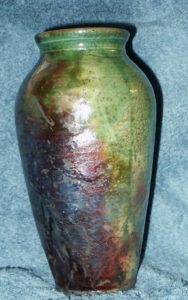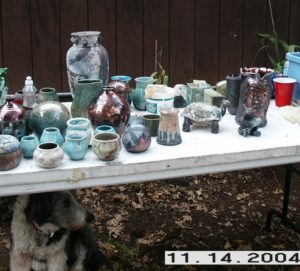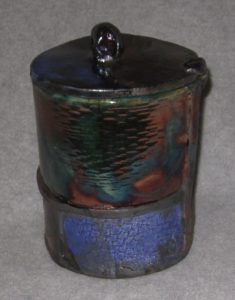
RAKU – a process by which pottery is fired at a relatively low temperature (about 1800°F)and then moved while hot to a closed container with combustible materials (as paper or sawdust) that ignite and the fire and smoke react with the glaze to create very unique and unpredictable colors, lusters, and patterns.in the pottery’s surface. Originally developed in 16th century Korea, and traditionally used in the Japanese Tea Ceremony, most often in the form of tea bowls, Raku in Ameri

ca has adapted the technique to many forms of pottery and sculpture.
Most Raku ware is not fired to vitrification – where clay turns into a glass like substance. Because of this, it is more fragile than regular pottery and the clay remains porous (water may seep through it). The glazes and chemicals used to decorate the piece may be prone to leach and this means these pieces are not intended to hold food. Raku should not be left for extended periods of time in direct sunlight – this may cause the colors to fade. If you want to use as a vase for flowers please place a glass container inside first. Hand washing is recommended.

Pieces labeled “Water-Tight Raku” have Raku glazes and techniques applied to fully vitrified clay, and are therefore more suitable for vases.